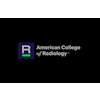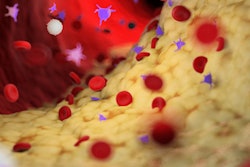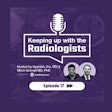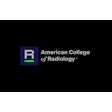
Now, two-and-a-half years after the initial COVID-19 pandemic lockdown, many radiology practices are experiencing pressure to grow – even as many groups are still in recovery mode.
To accomplish this goal, radiology departments and imaging centers can consider strategies such as incorporating technological innovations and performing community outreach to increase their brand awareness.
In times like this, it's also important to take care of your employees. And meeting their needs can also drive improvements in service to patients.
Efficiency from scheduling
At Lee Health in Fort Myers, FL, the implementation of a patient scheduling initiative that was implemented before the pandemic captures the status of all imaging modalities as patients move through the facility.
According to Jane Fry, radiology director, the scheduling initiative enhances patient throughput and is continually being refined to ensure that patients are not unnecessarily held up because they are waiting for imaging.
"What has worked for us is being able to analyze our turnaround times on a daily basis," said Fry, noting daily metrics are shared for patient throughput to ensure that targets for moving patients through imaging are being met 80% of the time.
If there are any "outliers" that are far off from the target for turnaround time, deep dives take place to address if there are any modifiable factors that can avoid a patient from becoming an outlier, explained Fry.
"You become more efficient and you can do more and increase your volume," said Fry. "This is how it helps to grow a practice, and it helps the whole hospital become more efficient. You can get answers as to what is going on with a patient."
Building brand awareness
Amid the myriad challenges facing radiology facilities include staffing challenges, technological change, and an uncertain economic climate, radiology facilities can think local to increase their brand awareness, according to David Waldron, CEO of Traction Business Development.
"Things have been stagnant for at least two years," said Waldron. "There is pressure to grow because there just hasn't been growth."
A low-tech way to capture attention, gain recognition, and build trust locally is community outreach, said Waldron, noting it's a strategy that can make radiology staff honored to be working with their radiology practice.
"One of the best ways to have an impact is talking to the local newspaper, local radio station, or local television station," said Waldron. "All that is needed is to have one successful (patient) case to discuss your practice. There is a hidden benefit to community outreach, which is the staff at the facility become proud of the organization they work for. The members of the radiology staff continue to take the message to the community."
Finding opportunity in technology advances
One of the impacts of the pandemic is the potential adoption of innovation that permits greater flexibility such as work from home, according to Dr. David Larson, chair of the American College of Radiology's Commission on Quality and Safety. He is also a professor of radiology at Stanford University, and associate chief quality officer for improvement for Stanford Health Care, as well as the physician co-leader of the Stanford Medicine Center for Improvement.
"We are becoming more creative in terms of practice environments, where workers can be in terms of whether they need to be onsite or work remotely," Larson said.
An example of such innovation is technology that enables remote activation and remote monitoring of scanners, he said. In addition, imaging is evolving such that findings may be evident on an examination that are unrelated to the referring physician's imaging order.
"A lung nodule may be seen on a CT scan to look at the chest, abdomen, and pelvis," said Dr. Larson. "Someone needs to follow up on that lung nodule. It may be the case you can now see carotid artery disease in a patient who is undergoing a lung cancer screening exam. You may be able to see sarcopenia and determine a patient's potential risk for a fracture."
If these findings are not identified and the information does not translate to preventive care, that potential for patient care is missed.
"If a finding could have been caught, or was caught, but there was not a system to ensure appropriate action, that needs to be built," Larson said. "It is a major opportunity, but also a challenge for the coming decade."
Focus on survival continues
With radiology gradually emerging from the pandemic, some consultants in radiology believe it may be somewhat premature to focus on growth.
Brenda Rinehartm, PhD, vice president & COO at Gracestone Professionals, stresses that there is a continued emphasis on the basics of life for many actors in radiology, such as technologists, and taking on new challenges like growth are not a priority for the moment.
"People have been knocked down Maslow's hierarchy because of the pandemic," said Rinehart in an interview. "They are more focused on basic needs like how to take care of [their] family and how to pay for [their] groceries than they are on self-actualization and career growth."
Meeting employees like technologists where they are currently at is a wise direction for imaging centers.
"They can't do anything new or innovative or any of that right now because people aren't going to respond to it," said Rinehart.
The actions that imaging centers and radiology facilities can take at this point is to meet with each of their employees, find out how best their needs can be met, and recognize that a one-size-fits-all approach to meeting their employees' needs does not exist.
"Something that we need to keep in mind when we're thinking about how best to meet the needs of our employees to get them back to healthy is that it is going to look very different for the 50-year-old than it is for the young millennial who may value things very differently," Rinehart said.
Happy radiology employees, happy patients
Mark Lerner, a recruiter with PSI Recruiters, suggests the key to patient engagement amid staffing challenges is positive and respectful treatment of employees in radiology that is based on values of dignity and professionalism.
The population is getting older and more and more imaging is being utilized, he noted. And imaging demands will only increase as imaging technology progresses.
"It is time for managers to think about what they're doing, to look at every aspect of their operations, and to see what they can do to make things easier, if possible, or meet the needs of their employees," Lerner said. "If you set high standards, but at the same time, try and have fun while you are doing this very difficult job, and you say these are the values that I am going to emphasize (as a manager) when I do my work with my employees, then you ask that those same values be extended to patients, that will raise the level of service excellence, and that will extend to patients."



















